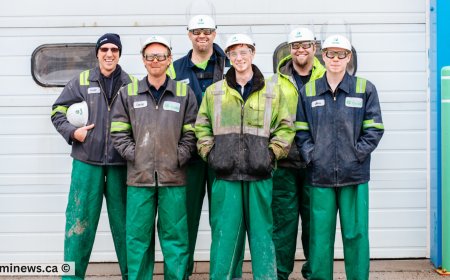Technical occupations in geomatics and meteorology Opportunities in Canada: A Comprehensive Immigration, Salary, and Duties Guide
Welcome to the pathway to Canada immigration for skilled professionals and trade workers. This guide is specifically tailored for Technical occupations in geomatics and meteorology looking to work and settle in Canada, offering a deep dive into the essential aspects of immigration and employment in this field.
Introduction
Canada is known for its strong job market and opportunities for skilled workers from various technical backgrounds. In this article, we will be focusing on the career and immigration prospects in Canada for technical occupations in geomatics and meteorology. Specifically, we will be looking at the National Occupation Classification code (NOC Code) 2255, which covers a range of technical positions in these fields. We will delve into the profile description, main job duties, education and licensing requirements, skills needed, median age and retirements, salary details, and possible visa options for individuals looking to pursue a career in geomatics and meteorology in Canada. By the end of this article, readers will have a comprehensive understanding of the opportunities available in these sectors and how to navigate the immigration process to work in Canada.
What is the Profile Description of a Technical occupations in geomatics and meteorology as per the Canadian National Occupation Classification (NOC) Standards?
Technical occupations in geomatics involve individuals who specialize in aerial survey, remote sensing, geographic information systems, and cartography. These professionals gather, analyze, interpret, and utilize geospatial information for various applications such as natural resources management, environmental research, and land use planning. Similarly, meteorological technicians and technologists play a crucial role in observing weather and atmospheric conditions, recording and interpreting meteorological data, and providing weather information to industries like agriculture, natural resources, transportation, and the general public. Geomatics and meteorological professionals work for government agencies, utilities, mapping companies, software developers, forestry organizations, engineering firms, and consulting companies to support various projects and initiatives. Their expertise is essential in ensuring accurate data collection and analysis for informed decision-making in diverse sectors.
What are the Main Job Duties of a Technical occupations in geomatics and meteorology in Canada?
- Operate specialized equipment such as remote sensing cameras, laser or radar sensors and scanners to collect and analyze aerial data for the preparation of images, maps, and charts
- Develop and customize software routines for image analysis, GIS modeling, and data visualization
- Collaborate with external organizations on data transfer and compatibility issues, and provide technical support and training for GIS users
- Plan map content and design, compile data, and generate maps using digital mapping techniques, CAD software, and traditional drafting methods
- Observe, record, and transmit atmospheric and weather information, participate in forecasting programs, and maintain meteorological equipment and instruments
What are the Education, Certifications, and Licensing Requirements to Work as Technical occupations in geomatics and meteorology in Canada?
To qualify for technical occupations in geomatics and meteorology, individuals must have completed secondary school. Geomatics technologists must have completed a two- to three-year college program in areas such as cartography, photogrammetry, or geographic information systems. Geomatics technicians require a one- to two-year college program in similar fields. In Quebec, professionals must be a member of the regulatory body for technologists to use the title ''Professional Technologist''. Meteorological technicians must have completed a one-year program provided by the Meteorological Service of Canada, although further specialized training may be necessary for certain employers.
What Essential Skills are Required for Technical occupations in geomatics and meteorology to succeed in Canada?
Success in technical occupations in geomatics and meteorology requires a diverse set of essential skills. Professionals in this field must be able to generate maps, graphs, and charts, plan map content and design, compile data from various sources, maintain digital databases, and process data to analyze trends. They must also be proficient in writing technical reports, monitoring quality, conducting field checks, inspecting compositions, interpreting aerial photographs, developing computer software, participating in avalanche control programs, performing data entry, operating remote sensing equipment, observing and recording weather information, maintaining climatological databases, analyzing weather data, and reporting on ice conditions in navigable waters. Additionally, individuals in this profession must have strong attention to detail, problem-solving skills, technical proficiency, and an understanding of geographical and meteorological concepts.
What is the Median Age and Retirement Age for Technical occupations in geomatics and meteorology in Canada?
The skilled professionals working in technical occupations in geomatics and meteorology have a median age of 40 years. This indicates that there is a mix of experienced professionals along with newer entrants in this field. The average retirement age in this profession is 65, which allows for a significant amount of time for individuals to gain expertise and contribute to their field before considering retirement. This suggests that there is a steady flow of experienced talent in the industry, ensuring that there is a transfer of knowledge and skills to younger professionals entering the field.
How many job openings exist for Other Technical occupations in geomatics and meteorology in Canada, and what's their provincial distribution?
There are a total of 17 job openings for the profile of Technical occupations in geomatics and meteorology in Canada. Among the provinces, British Columbia has the highest number of job openings with 5 positions available, followed by Québec with 4 openings. Ontario and Alberta have 3 and 2 job openings respectively, while Nova Scotia and Saskatchewan each have 1 job opening. British Columbia stands out as the province with the maximum job openings, while Nova Scotia and Saskatchewan have the minimum number of job openings in this field. Overall, there is a decent number of job opportunities available for individuals interested in pursuing a career in geomatics and meteorology in Canada.
What is the hourly wage or salary of Technical occupations in geomatics and meteorology in different Provinces of Canada?
When looking at wage analysis for technical occupations in geomatics and meteorology in Canada, we can see some variations across provinces. In British Columbia, the wages for this profession range from $20.00 as the low wage, $31.04 as the median wage, and $57.69 as the high wage. Moving on to Alberta, the wages are slightly higher with a low wage of $24.04, a median wage of $41.21, and a high wage of $51.00. Saskatchewan also offers competitive wages with a low wage of $24.24, a median wage of $35.24, and a high wage of $48.97. In Manitoba, the wages are slightly lower compared to other provinces, with a low wage of $19.40, a median wage of $29.03, and a high wage of $41.99. Ontario offers a median wage of $34.87, a low wage of $24.04, and a high wage of $44.00. Moving to Quebec, we see wages ranging from a low of $20.33, a median of $28.00, to a high of $38.46. Lastly, in New Brunswick and Nova Scotia, the wages are similar with a low wage of $21.98, a median of $30.41, and a high of $40.47. These figures indicate that wages for technical occupations in geomatics and meteorology vary by province, with British Columbia and Alberta offering some of the highest wages in this profession.
What are the various visa options available for Technical occupations in geomatics and meteorology migrating to Canada?
Technical occupations in geomatics and meteorology have various visa options available to migrate to Canada. One popular option is the Express Entry Visa Category, which allows skilled workers to apply for permanent residency based on their qualifications and work experience. Additionally, Technical occupations in geomatics and meteorology can also apply through the Provincial Nominee Programs, which allow provinces to nominate individuals who have the skills and experience needed in their local labor market. Employer Sponsored Work Visas are another option, where a Canadian employer can sponsor a foreign worker for a temporary work permit. Technical occupations in geomatics and meteorology can directly apply under these programs to start their journey towards working and living in Canada. There may be other visa options currently open for this profile as well. To know more about these visa options and discuss your specific situation in detail, you can book an appointment with our professionals today.
Have Questions or Need Assistance?
If you have any queries or require assistance with your immigration plans, we're here to help. Our experienced immigration consultants are ready to provide personalized guidance tailored to your specific needs.
Don't hesitate to reach out and schedule an appointment today. Whether you're seeking clarification on immigration processes, exploring visa options, or need support with documentation, we're dedicated to assisting you every step of the way.
Book an appointment with our team to discuss your immigration goals and receive expert guidance for your journey to Canada.
What's Your Reaction?
 Like
0
Like
0
 Dislike
0
Dislike
0
 Love
0
Love
0
 Funny
0
Funny
0
 Angry
0
Angry
0
 Sad
0
Sad
0
 Wow
0
Wow
0






































































